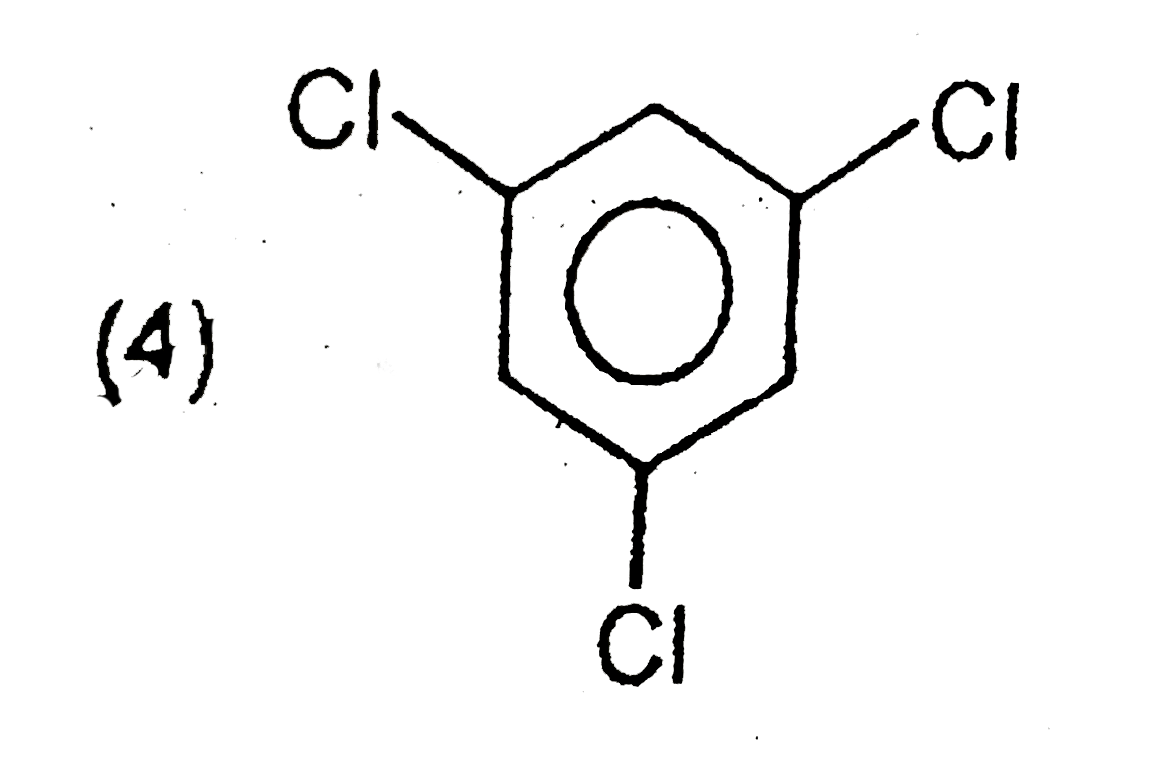Which of the following species is non polar with presence of polar bond and lone pair of electron on central atom.
CO2
SF4
XeF4
CF4
The correct Answer is:C
To determine which of the given species is non-polar while having a polar bond and a lone pair of electrons on the central atom, we can follow these steps:
Step 1: Understand the Definitions
- Polar Bond: A bond between two atoms that have different electronegativities, resulting in a dipole moment.
- Non-Polar Molecule: A molecule that has an even distribution of charge, meaning that any dipole moments cancel each other out.
- Lone Pair: A pair of valence electrons that are not shared with another atom.
Step 2: Analyze Each Option
1. CO2 (Carbon Dioxide):
- Structure: Linear (O=C=O)
- Polar Bonds: Yes, due to the difference in electronegativity between carbon and oxygen.
- Lone Pairs: No lone pairs on the central atom (carbon).
- Conclusion: Non-polar, but does not meet the criteria (no lone pair). (Incorrect option)
2. SF4 (Sulfur Tetrafluoride):
- Structure: Seesaw
- Polar Bonds: Yes, due to the difference in electronegativity between sulfur and fluorine.
- Lone Pairs: Yes, there is one lone pair on sulfur.
- Conclusion: Polar molecule because the dipoles do not cancel out. (Incorrect option)
3. XeF4 (Xenon Tetrafluoride):
- Structure: Square planar
- Polar Bonds: Yes, due to the difference in electronegativity between xenon and fluorine.
- Lone Pairs: Yes, there are two lone pairs on xenon.
- Conclusion: Non-polar molecule because the dipoles cancel out. (Correct option)
4. CF4 (Carbon Tetrafluoride):
- Structure: Tetrahedral
- Polar Bonds: Yes, due to the difference in electronegativity between carbon and fluorine.
- Lone Pairs: No lone pairs on carbon.
- Conclusion: Non-polar, but does not meet the criteria (no lone pair). (Incorrect option)
Step 3: Final Conclusion
The only species that is non-polar while having polar bonds and lone pairs on the central atom is XeF4.
Final Answer
The correct option is XeF4.
- Polar Bond: A bond between two atoms that have different electronegativities, resulting in a dipole moment.
- Non-Polar Molecule: A molecule that has an even distribution of charge, meaning that any dipole moments cancel each other out.
- Lone Pair: A pair of valence electrons that are not shared with another atom.
1. CO2 (Carbon Dioxide):
- Structure: Linear (O=C=O)
- Polar Bonds: Yes, due to the difference in electronegativity between carbon and oxygen.
- Lone Pairs: No lone pairs on the central atom (carbon).
- Conclusion: Non-polar, but does not meet the criteria (no lone pair). (Incorrect option)
- Structure: Seesaw
- Polar Bonds: Yes, due to the difference in electronegativity between sulfur and fluorine.
- Lone Pairs: Yes, there is one lone pair on sulfur.
- Conclusion: Polar molecule because the dipoles do not cancel out. (Incorrect option)
- Structure: Square planar
- Polar Bonds: Yes, due to the difference in electronegativity between xenon and fluorine.
- Lone Pairs: Yes, there are two lone pairs on xenon.
- Conclusion: Non-polar molecule because the dipoles cancel out. (Correct option)
- Structure: Tetrahedral
- Polar Bonds: Yes, due to the difference in electronegativity between carbon and fluorine.
- Lone Pairs: No lone pairs on carbon.
- Conclusion: Non-polar, but does not meet the criteria (no lone pair). (Incorrect option)
The only species that is non-polar while having polar bonds and lone pairs on the central atom is XeF4.
The correct option is XeF4.
Topper's Solved these Questions
Similar Questions
Knowledge Check
Which of the following is non polar species.
ACHCI3B C
C D
D
Which of the following species is planar and polar?
ASO3BPOCl3CNH−2DSO−23Which of the following bonds is most polar ?
AC-OBC-FCO-FDN-F.
Which of the following species is/are polar in nature ?
View SolutionWhich species is non-polar?
View SolutionWhich of the following is non-polar ?
View SolutionWhich one of the following species is planar and non-polar with two lone pairs of electrons on the central atom ?
View SolutionWhich of the following is non-polar
View Solution

